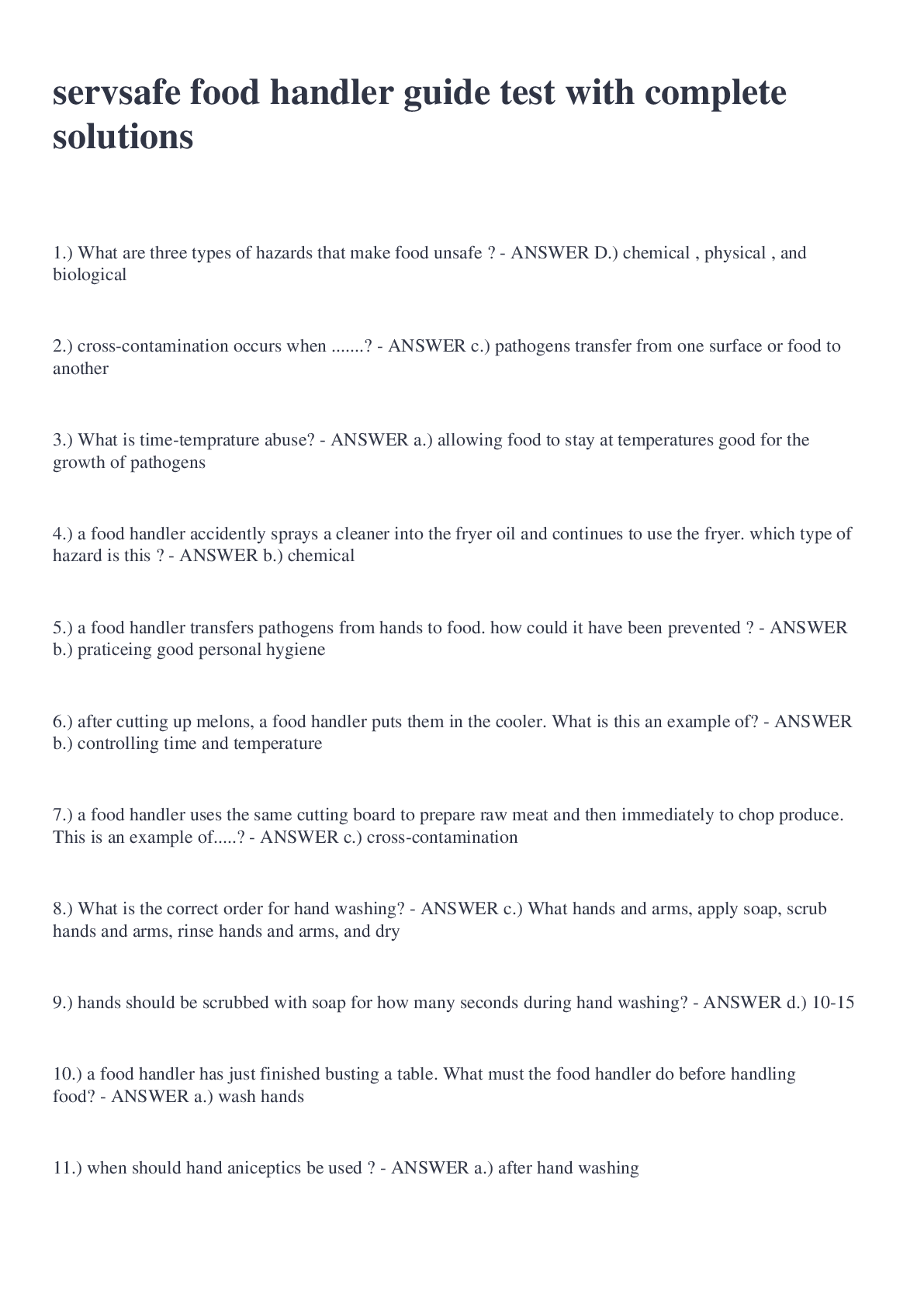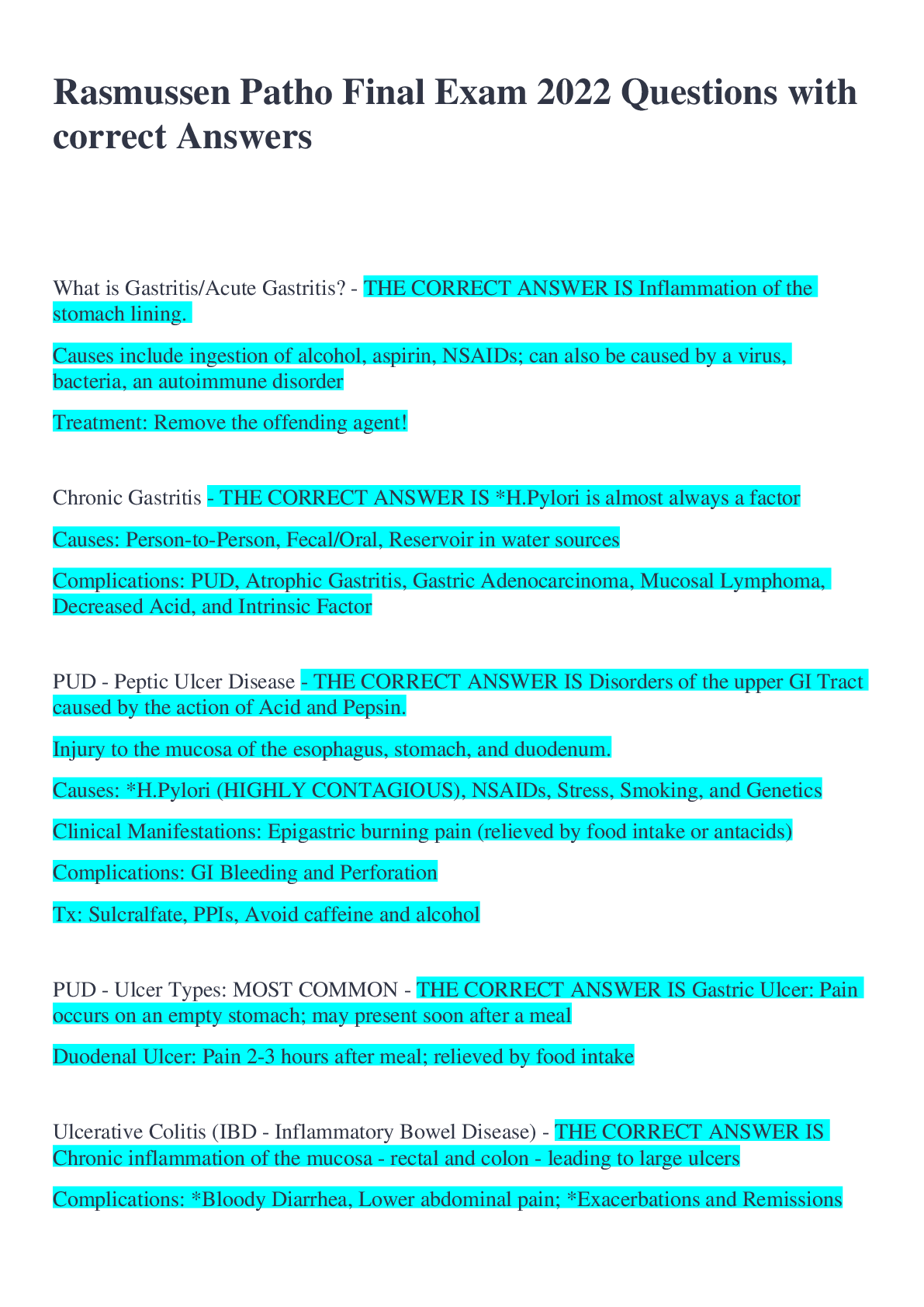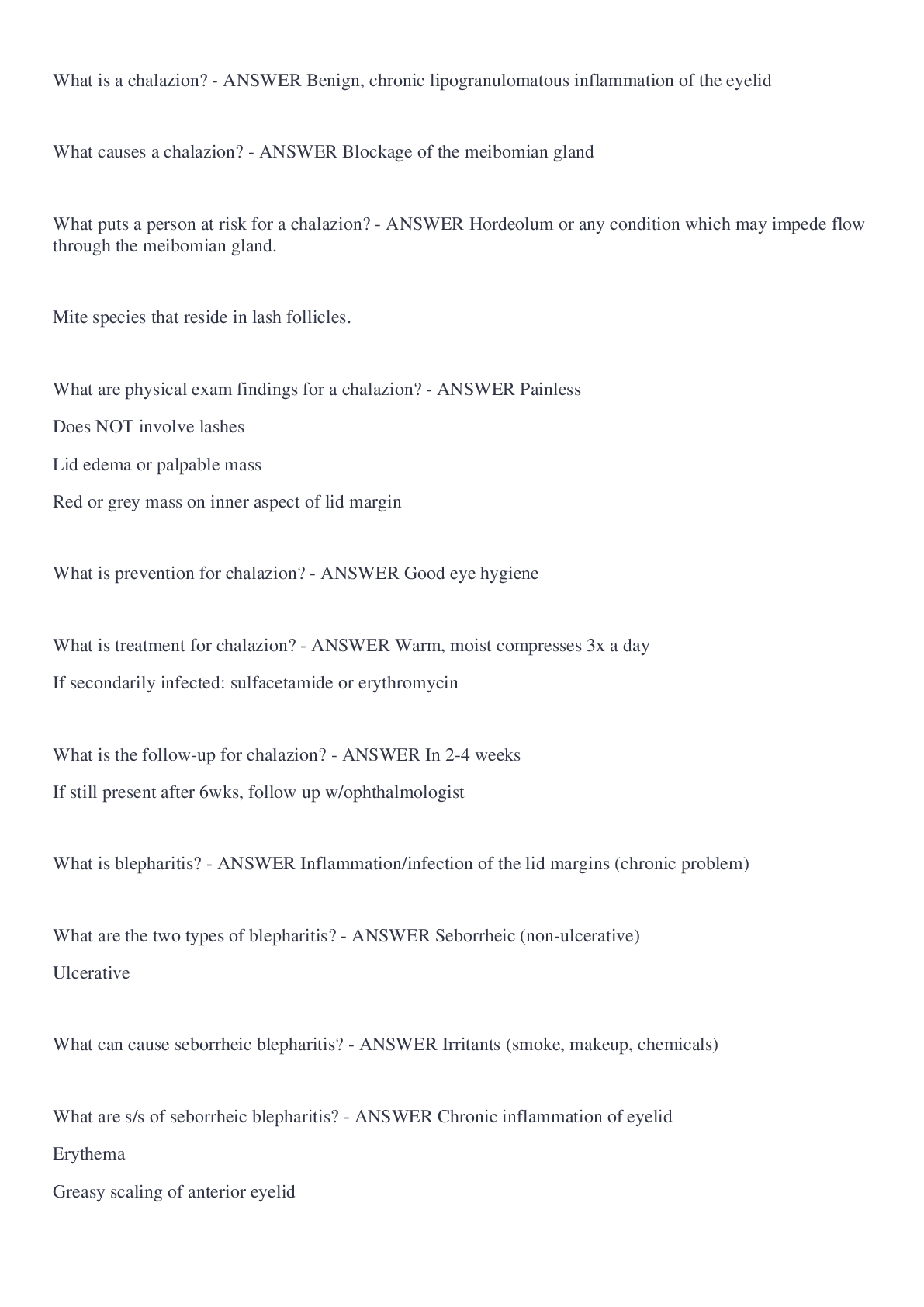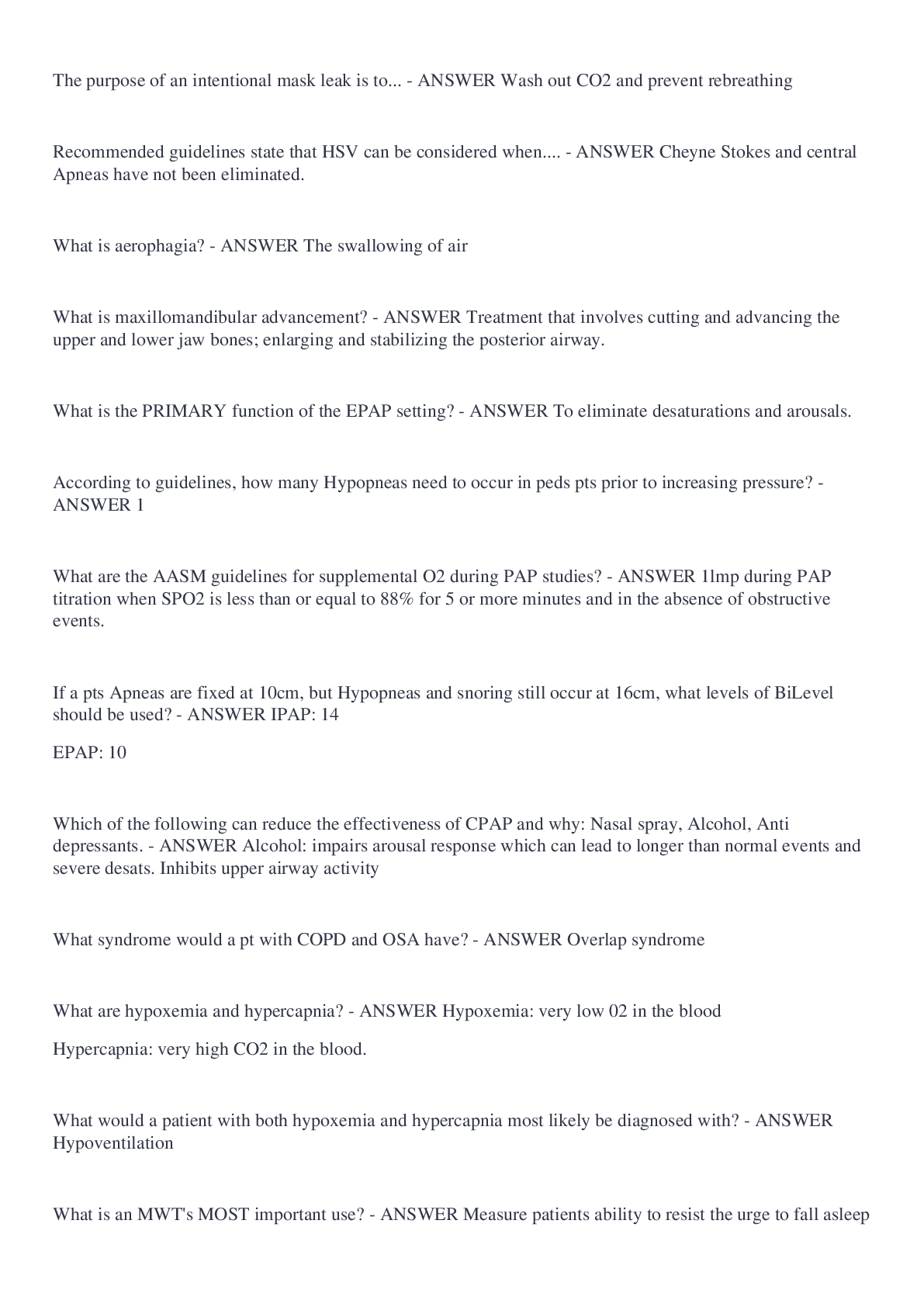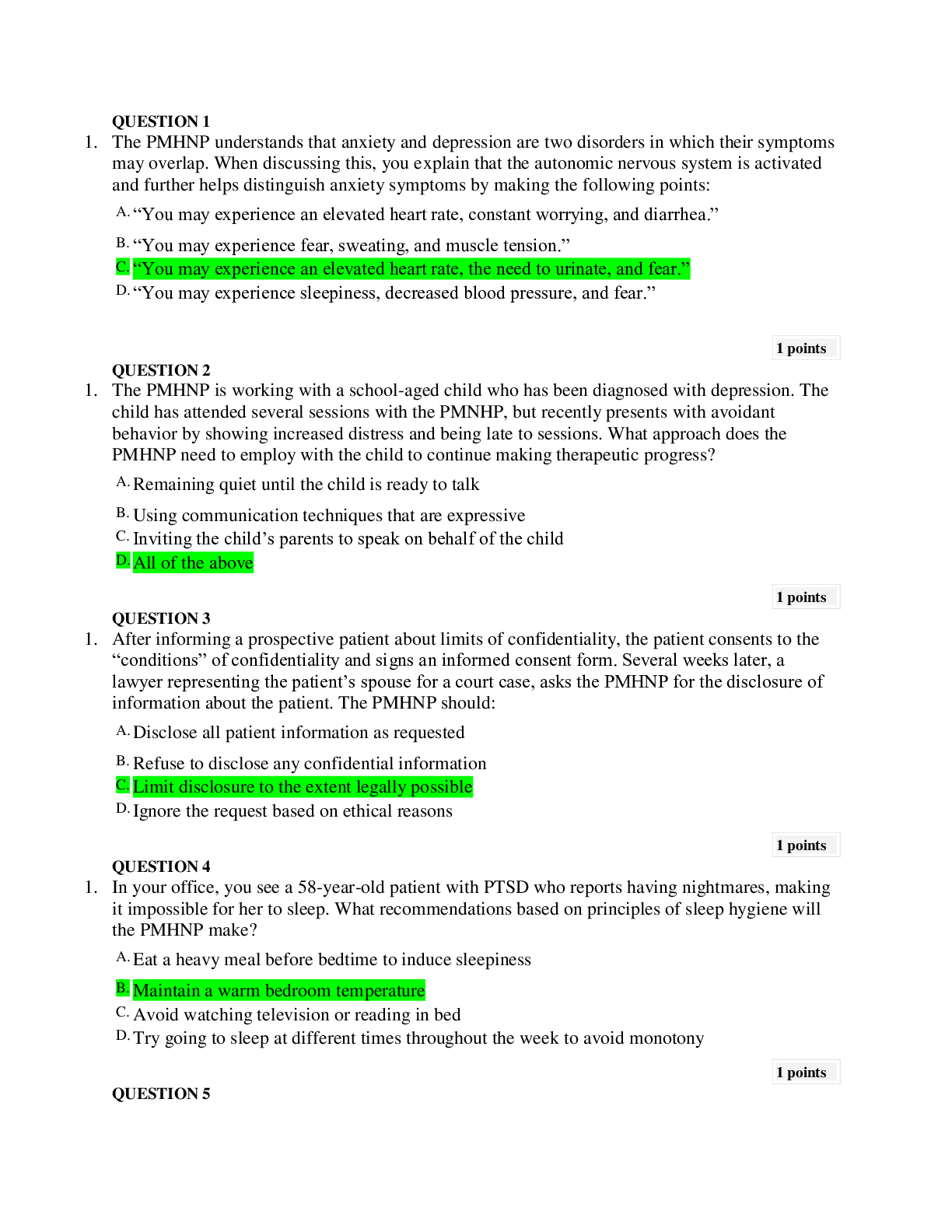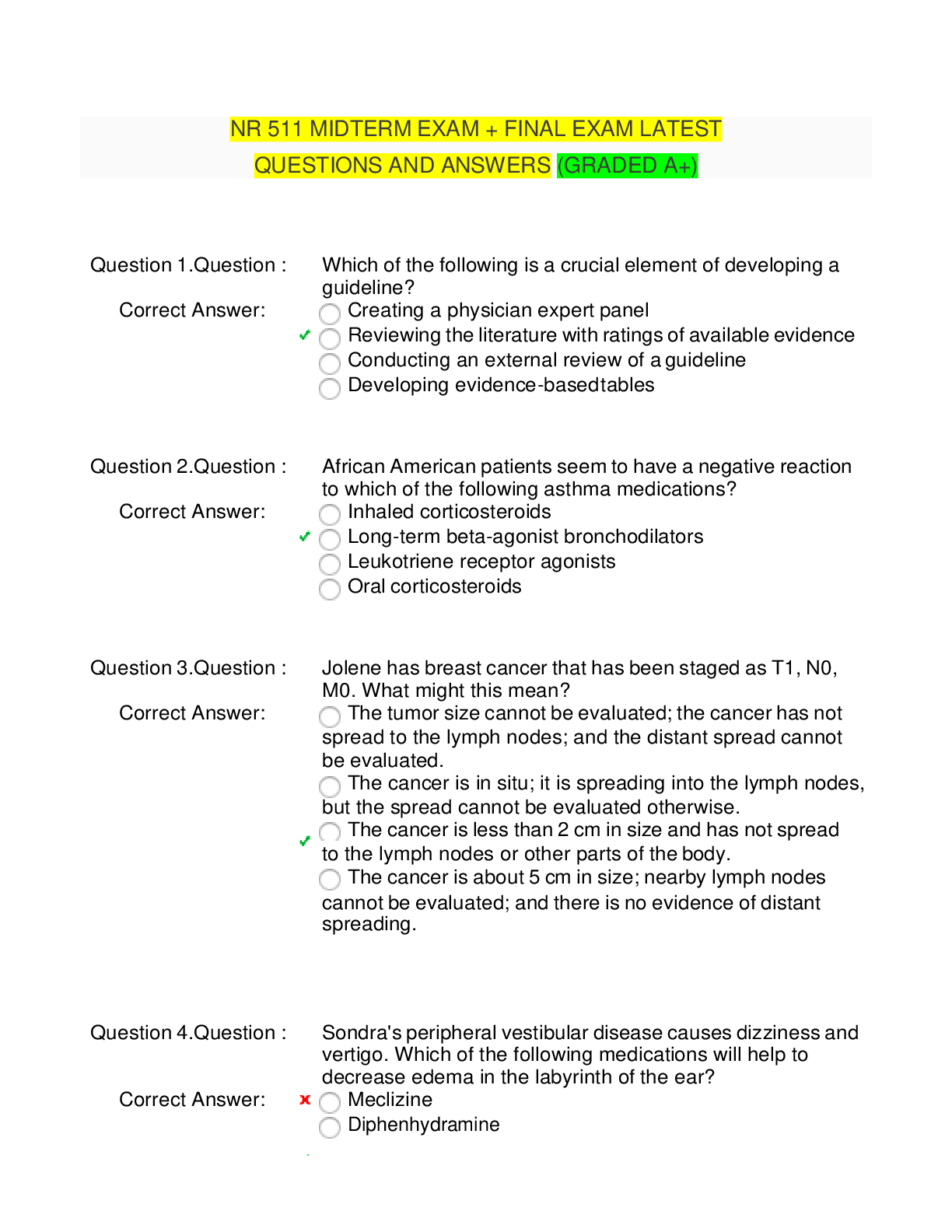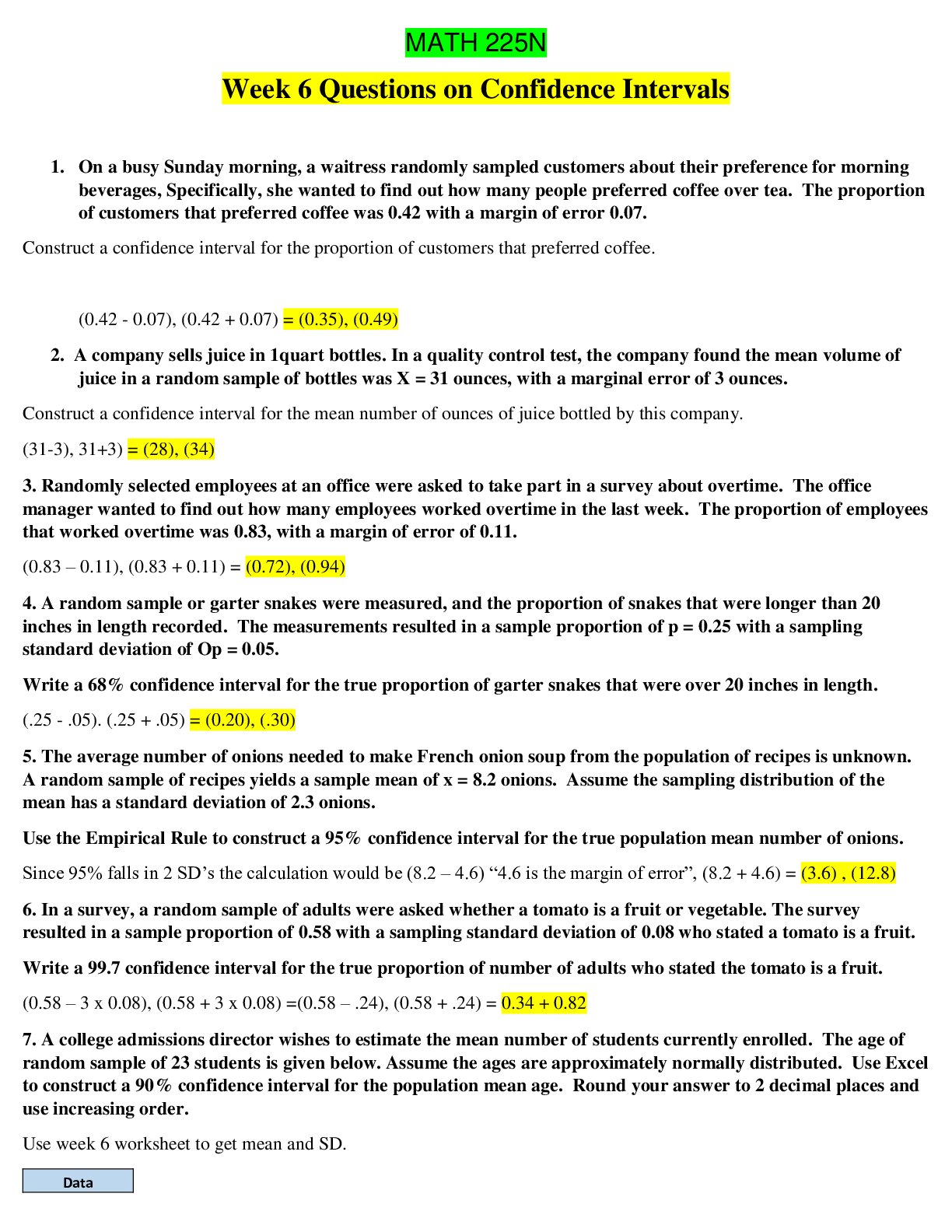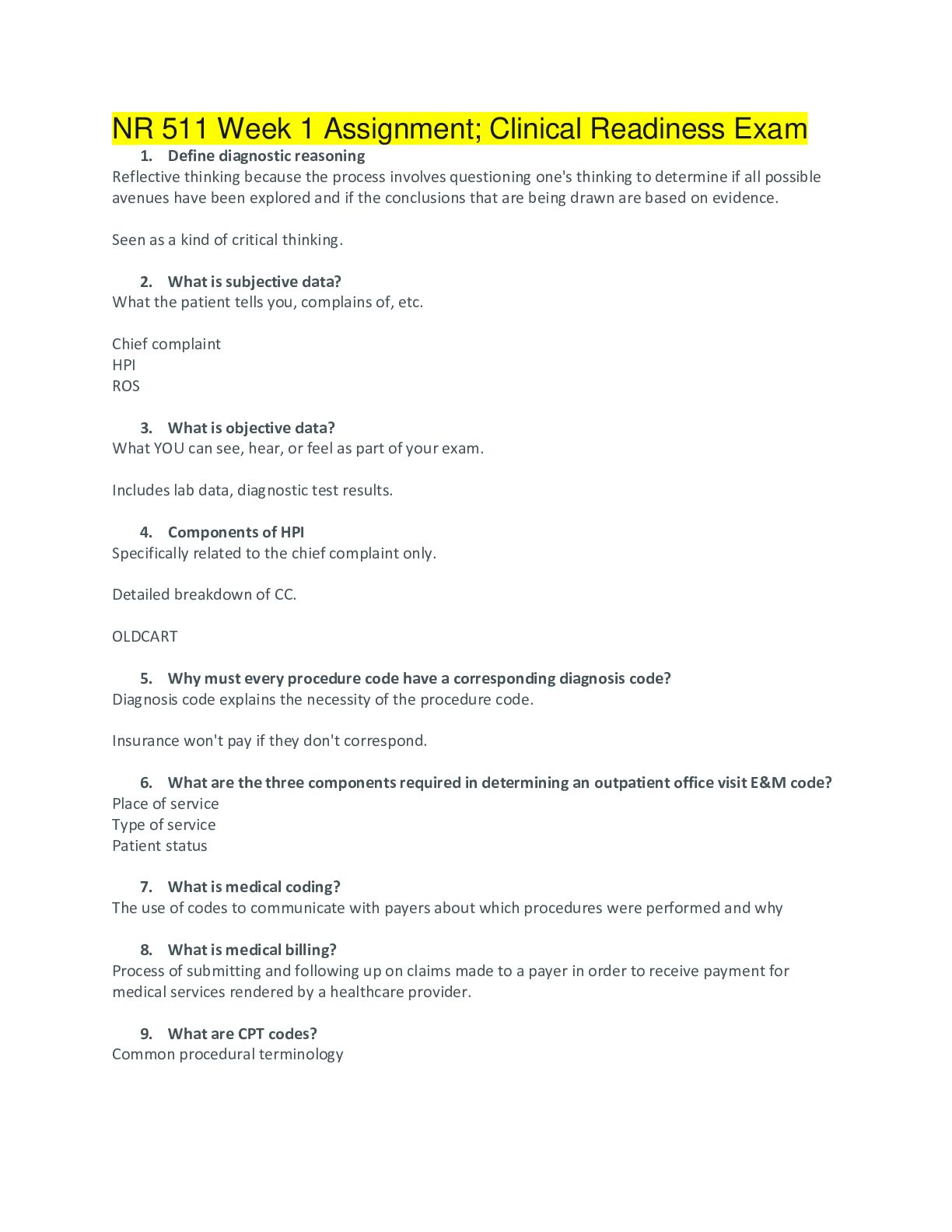Acq Terms Questions and Answers
Document Content and Description Below
Information Support Plan (ISP) - ANSWER ISPs provide a means to identify and resolve potential information support implementation issues and risks that, if not properly managed, will limit or restrict... the ability of a program to be operationally employed in accordance with the defined capability. The end-product of the ISP/EISP/TISP is the identified issues and risks associated with information needs and dependencies of the program Enhanced Information Support Plan (EISP) Tailored Information Support Plan (TISP) Clinger-Cohen Act (CCA) - ANSWER (40 U.S.C. Subtitle III) This act made significant changes to defense acquisition policy, with provisions incorporated in Title 40 and Title 44 of the United States Code. It requires certification for MAIS programs to be granted Milestone B approval. Title 40/CCA requires Federal agencies to focus more on the results achieved through its IT investments, while streamlining the Federal IT procurement process. Specifically, this Act introduces much more rigor and structure into how agencies approach the selection and management of IT projects. Chief Information Officer (CIO) - ANSWER 40 U.S.C. Subtitle III (CCA) Elevated oversight responsibility to the Director of the Office of Management and Budget (OMB) and established and gave oversight responsibilities to the departmental Chief Information Officer (CIO). Also, under this Act, the head of each agency is required to implement a process for maximizing the value and assessing and managing the risks of the agency's IT acquisitions. The DoD CIO has the primary responsibility of providing management and oversight of all Department IT to ensure the Department's IT systems are interoperable, secure, properly justified, and contribute to mission goals. Statutory Authority - ANSWER Example: 40 U.S.C. Subtitle III (CCA) Statutes aka Laws: are enacted by Congress and signed into law by the President. Statutes are mandatory by law. *Statutory requirements cannot be waived unless the statute permits. Regulatory Authority - ANSWER Example: DoDI 5000.02 Regulations aka Standards: are issued by executive agencies in order to implement statutes enacted by Congress. Imposed by independent agencies or bodies. Regulatory Requirements to make Statutory requirements more explicit, manageable or flexible. *Regulatory MDAs may tailor regulatory procedures consistent with sound business practice and the risks associated with the product being acquired. ANALYSIS OF ALTERNATIVES (AoA) - ANSWER Assessment of potential materiel solutions to satisfy the capability need documented in the approved Initial Capabilities Document (ICD). It focuses on identification and analysis of alternatives, Measures of Effectiveness (MOE), cost, schedule, concepts of operations, and overall risk, including the sensitivity of each alternative to possible changes in key assumptions or variables. The AoA also assesses critical technologies associated with each proposed materiel solution, including technology maturity, integration risk, manufacturing feasibility, and where necessary, technology maturation and demonstration needs. The AoA will also address the fully burdened cost of fuel for each alternative, when appropriate. The AoA is normally conducted during the Materiel Solution Analysis (MSA) phase of the Defense Acquisition System, is a key input to the Capability Development Document (CDD), and supports the materiel solution decision at Milestone A. The AoA may be updated for the Development Request for Proposal (RFP) Release Decision Point and Milestone C review if there are changes to the design that impact AoA assumptions. Benefit Analysis Determination (Part of Acq Strategy) - ANSWER The Benefits Analysis (sometimes called Consolidation and Bundling Benefit Analysis) makes the case for an acquisition strategy that consolidates and/or bundles requirements. It identifies, quantifies, and compares the benefits arising from the strategy's implementation to benefits that would result from alternative strategies on cost savings, quality improvements, reductions in acquisition cycle times, better terms and conditions, etc., and is part of the Acquisition Strategy. After reviewing the Benefits Analysis, a Senior Procurement Executive makes a Determination either in favor of or against the issuance of the solicitation based on whether the benefits described substantially exceed the necessary thresholds (for consolidated requirements) or are measurably substantial (for bundled requirements). Cooperative Opportunities - ANSWER A part of the Acquisition Strategy (or Course of Action Analysis for urgent needs) that is required of all Acquisition Category (ACAT) programs due only at the first program milestone review. The term means a project involving joint participation by the United States and one or more countries and organizations under a memorandum of understanding (or other formal agreement) to carry out a joint research and development program to develop new conventional defense equipment and munitions, or to modify existing military equipment to meet United States military requirements. Source: •10 U.S. Code, §2350a Market Research (Part of Acq Strategy) - ANSWER A process for gathering data on product characteristics, suppliers' capabilities, and the business practices that surround them. Includes the analysis of that data to inform acquisition decisions. There are two types of market research, strategic market research and tactical market research. •Strategic Market Research Includes all the activities that acquisition personnel perform continuously to keep themselves abreast of technology and product developments in their areas of expertise. •Tactical Market Research A phase of market research conducted in response to a specific materiel need or need for services. Acquisition Decision Memorandum (ADM) - ANSWER A memorandum signed by the Milestone Decision Authority (MDA) that documents decisions and direction resulting from milestone and other major decision point reviews. Acquisition Program Baseline (APB) - ANSWER An agreement between the Program Manager (PM) and the Milestone Decision Authority (MDA) that reflects the approved program and contains schedule, performance, and cost parameters that are the basis for satisfying an identified mission need. The first APB is approved by the MDA prior to a program entering Engineering and Manufacturing Development, or at program initiation, whichever occurs later. As a minimum, the APB contains the objective and threshold values for major milestones and significant schedule events, key performance parameters from the approved requirements document, and the life-cycle cost estimate approved for the program. Acquisition Strategy Plan (ASP) - ANSWER Describes the Program Manager's plan to achieve program execution and programmatic goals across the entire program life cycle. Summarizes the overall approach to acquiring the capability (to include the program schedule, structure, risks, funding, and the business strategy). Contains sufficient detail to allow senior leadership and the Milestone Decision Authority (MDA) to assess whether the strategy makes good business sense, effectively implements laws and policies, and reflects management's priorities. Once approved by the MDA, the Acquisition Strategy provides a basis for more detailed planning. The strategy evolves over time and should continuously reflect the current status and desired goals of the program. Affordability Analysis - ANSWER Long-range planning and decision making that determines the resources a Component can allocate for each new capability by ensuring that the total of all such allocations - together with all other fiscal demands that compete for resources in the Component - are not above the Component's future total budget projection for each year. Life-Cycle Sustainment Plan (LCSP) - ANSWER Initially prepared for Milestone A and updated for the Development Request For Proposal (RFP) Release Decision Point, Milestone B, Milestone C, Full-Rate Production Decision Review (FRPDR) and at least every 5 years after a system's Initial Operational Capability (IOC). It contains the results of life cycle sustainment planning accomplished during the Materiel Solution Analysis (MSA) phase and the Technology Maturation and Risk Reduction (TMRR) phase and spans the system's entire life cycle from Milestone A to disposal. The LCSP addresses how the program manager (PM) and other organizations will acquire and maintain oversight of the fielded system. Systems Engineering Plan (SEP) - ANSWER An acquisition program's primary technical planning document. It serves as the blueprint for the integration and management of technical processes and design development in order to define and balance system performance, cost, schedule, risk, and security within the program and throughout its life cycle. The SEP is a living document in which Systems Engineering planning should be kept current and fidelity should evolve as the program progresses through each acquisition phase. Test and Evaluation Master Plan (TEMP) - ANSWER Documents the overall structure and objectives of the Test and Evaluation (T&E) program and articulates the necessary resources to accomplish each phase of test. It provides a framework within which to generate detailed T&E plans and documents schedule and resource implications associated with the T&E program. The TEMP also identifies the necessary Developmental Test and Evaluation (DT&E), Operational Test and Evaluation (OT&E), and Live Fire Test and Evaluation (LFT&E) activities, and provides a clear roadmap connecting evaluation objectives, test measures, requirements, test methodologies, decision points, test events, and resources. For multi-Service or joint programs, a single integrated TEMP is required. Should Cost Target - ANSWER A Program Manager's cost goal for an acquisition program, or particular activity or product within an acquisition program, developed by analyzing all elements of the program's Independent Cost Estimate (Will-Cost Estimate) and planning reasonable measures to reduce them. These specific, discrete "Should-Cost" initiatives are developed with prudent, cost-benefit based considerations of associated risks, but without unacceptable reductions in the value received. A program's "Should-Cost" Target represents what the Program Manager believes the program ought to cost if identified cost saving initiatives are achieved. - ANSWER Independent Cost Estimate (ICE) Independent Cost Analysis. (ICA) - ANSWER ICE: Independent Cost Estimate (ICE) A Life Cycle Cost Estimate (LCCE) for Acquisition Category (ACAT) I programs prepared by an office or other entity that is not under the supervision, direction, or control of the Military Department, Defense Agency, or other Component of the DoD that is directly responsible for carrying out the development or acquisition of the program. ICA: An analysis of Program Office Estimates (POE) and/or Component Life Cycle Cost Estimates (LCCEs) conducted by an impartial body disassociated from the management of the program. Acquisition Program Baseline (APB) - ANSWER Prior to any program initiation, DoD 5000.2 requires all programs establish program goals and associated thresholds for cost, schedule, and performance. The program manager manages to this baseline. Cost Analysis Requirements Description (CARD) - ANSWER The common description of the technical and programmatic features of the program that is used by the teams preparing the Program Office (PO), Component Cost Analysis (CCA), and independent Life Cycle Cost Estimates (LCCEs). Configuration (or Change) Control Board. (CCB) - ANSWER The process designed to manage approved designs and the implementation of approved changes, not to influence the actual design process. Control is achieved via the systematic proposal, justification and evaluation of design changes, followed by structured incorporation of those proposals that are approved. Capability Development Document. (CDD) - ANSWER A document that captures the information necessary to develop a proposed program(s), normally using an evolutionary acquisition strategy. The CDD outlines an affordable increment of militarily useful, logistically supportable and technically mature capability. The CDD supports a Milestone B decision review. See CPD also. Contract Data Requirements List. (CDRL) - ANSWER A DD Form 1423 list of contract data requirements that are authorized for a specific acquisition and made a part of the contract. Capability Production Document (CPD) - ANSWER Addresses the production elements specific to a single increment of an acquisition program. The CPD must be validated and approved before a Milestone C decision review. The refinement of performance attributes and Key Performance Parameters (KPPs) is the most significant difference between the Capability Development Document (CDD) and CPD. Contract Work Breakdown Structure. (CWBS) - ANSWER A complete WBS for a contract. It includes the DoD-approved Program WBS extended to the agreed contract reporting level and any discretionary extensions to lower levels for reporting or other purposes. It includes all the elements for the products (hardware, software, data, or services) which are the responsibility of the contractor. This comprehensive WBS forms the framework for the contractor's management control system. Defense Acquisition Executive Summary. (DAES) - ANSWER The principal mechanism for tracking programs between milestone reviews. A DAES report is provided by the Program Manager (PM) of a Major Defense Acquisition Program (MDAP) to the Under Secretary of Defense (Acquisition, Technology, and Logistics) (USD (AT&L)) each calendar quarter. Expectation Management Agreement (EMA) - ANSWER A document containing anticipated cost, schedule and performance of a system under acquisition, jointly signed by the user and the acquirer. Developed in an effort to keep requirements constant while a program manager focuses on delivering the expected system within cost and schedule. Changes to the EMA must be made at the General Officer level and should be updated annually in conjunction with the PMD. The EMA has recently changed to the Program Management Agreement (PMA). Initial Capabilities Document. (ICD) - ANSWER Documents the need for a materiel approach to a specific capability gap derived from an initial Analysis of Materiel Approaches (AMA) executed by the operational user and, as required, an independent analysis of materiel alternatives. The ICD defines the gap in terms of the functional area, the relevant range of military operations, desired effects and time. It also summarizes the results of Doctrine, Organization, Training, Materiel, Leadership, Personnel, and Facilities (DOTMLPF) analysis and describes why nonmaterial changes alone have been judged inadequate in fully providing the capability. Formerly Mission Needs Statement (MNS). Information Technology - ANSWER Any equipment or interconnected system or subsystem of equipment, that is used in the automatic acquisition, storage, manipulation, management, movement, control, display, switching, interchange, transmission, or reception of data or information by the executive agency. IT includes computers, ancillary equipment, software, firmware and similar procedures, services (including support services), and related resources, including National Security Systems (NSSs). It does not include any equipment that is acquired by a federal contractor incidental to a federal contract. (CJCSI 6212.01C) See National Security System. Joint Capabilities Integration and Delvp System. (JCIDS) - ANSWER Supports the Chairman of the Joint Chiefs of Staff (CJCS) and the Joint Requirements Oversight Council (JROC) in identifying, assessing, and prioritizing joint military capability needs as required by law. Key Performance Parameter. (KPP) - ANSWER Those attributes or characteristics of a system that are considered critical or essential to the development of an effective military capability and those attributes that make a significant contribution to the key characteristics as defined in the Joint Operations Concept. KPPs are validated by the Joint Requirements Oversight Council (JROC) for JROC Interest documents, and by the DoD Component for Joint Integration or Independent documents. Life-Cycle Cost. (LCC) - ANSWER The total cost to the government of acquisition and ownership of that system over its useful life. It includes the cost of development, acquisition, operations, and support (to include manpower), and where applicable, disposal. Also called Total Ownership Cost (TOC). Life Cycle Management Plan. (LCMP) - ANSWER This document integrates both the acquisition and sustainment strategies from concept development to disposal and provides all product support requirements of a supported system, subsystem, or major end item. The LCMP lays out full life cycle product support strategies; and maximizes system effectiveness from the perspective of the warfighter. Major Automated Information System. (MAIS) - ANSWER An Automated Information System (AIS) program that is: 1) designated by the ASD(NII) as a MAIS; or 2) estimated to require program costs in any single year in excess of $32 million (FY 2000 constant dollars), total program costs in excess of $126 million (FY 2000 constant dollars), or total Life Cycle Cost (LCC) in excess of $378 million (FY 2000 constant dollars). MAISs do not include Information Technology (IT) that involves equipment that is an integral part of a weapon system or is an acquisition of services program. Monthly Activity Report. (MAR) - ANSWER Monthly cost, schedule and performance report required by higher headquarters. Milestone Decision Authority. (MDA) - ANSWER Designated individual with overall responsibility for a program. The MDA shall have the authority to approve entry of an acquisition program into the next phase of the acquisition process and shall be accountable for cost, schedule, and performance reporting to higher authority, including congressional reporting. Major Defense Acquisition Program. (MDAP) - ANSWER An ACAT 1 program; estimated by the Under Secretary of Defense (Acquisition, Technology and Logistics) (USD(AT&L) ) to require eventual expenditure for research, development, test, and evaluation of more than $365 million (fiscal year (FY) 2000 constant dollars) or procurement of more than $2.19 billion (FY 2000 constant dollars). Performance Based Logistics. (PBL) - ANSWER The preferred sustainment strategy for weapon system product support that employs the purchase of support as an integrated, affordable performance package designed to optimize system readiness. PBL meets performance goals for a weapon system through a support structure based on long-term performance agreements with clear lines of authority and responsibility. Program Executive Officer. (PEO) - ANSWER A military or civilian official who has responsibility for directing several Major Defense Acquisition Programs (MDAPs) or Major Automated Information Systems (MAIS) and for assigned major system and non-major system acquisition programs. Program Management Agreement. (PMA) - ANSWER A document containing anticipated cost, schedule and performance of a system under acquisition, jointly signed by the user and the acquirer. Developed in an effort to keep requirements constant while a program manager focuses on delivering the expected system within cost and schedule. Changes to the PMA must be made at the General Officer level and should be updated annually in conjunction with the PMD. The PMA has replaced the Expectation Management Agreement (EMA). Program Management Directive. (PMD) - ANSWER The official Headquarters (HQ) U.S. Air Force document used to direct acquisition responsibilities to the appropriate Air Force major commands, agencies, program executive offices (PEOs), or designated acquisition commander/director. Program Office (PO) - ANSWER The office of the Program Manager (PM) and the Government team responsible for program management. The central point for a program with industry, government agencies, and other activities participating in the system acquisition process. Program Office Estimate. (POE) - ANSWER A detailed estimate of acquisition and ownership costs normally required for high-level decisions. The estimate is performed early in the program and serves as the basis for all subsequent tracking and auditing purposes. System Engineering Plan. (SEP) - ANSWER A description of the program's overall technical approach including processes, resources, metrics, applicable performance incentives, and the timing, conduct, and success criteria of technical reviews. Source Selection Evaluation Board. (SSEB) - ANSWER A group of military and/or government civilian personnel, representing functional and technical disciplines, that is charged with evaluating proposals and developing summary facts and findings during source selection. Test and Evaluation Master Plan.(TEMP) - ANSWER Documents the overall structure and objectives of the Test and Evaluation (T&E) program. Technical Performance Measurement. (TPM) - ANSWER Describes all the activities undertaken by the government to obtain design status beyond that treating schedule and cost. A TPM manager is defined as the product design assessment which estimates, through tests, the values of essential performance parameters of the current design of Work Breakdown Structure (WBS) product elements. It forecasts the values to be achieved through the planned technical program effort, measures differences between achieved values and those allocated to the product element by the Systems Engineering Process (SEP), and determines the impact of these differences on system effectiveness. Work Breakdown Structure (WBS) - ANSWER An organized method to break down a project into logical subdivisions or subprojects at lower and low [Show More]
Last updated: 1 year ago
Preview 1 out of 8 pages
Instant download

Buy this document to get the full access instantly
Instant Download Access after purchase
Add to cartInstant download
Reviews( 0 )
Document information
Connected school, study & course
About the document
Uploaded On
Aug 29, 2022
Number of pages
8
Written in
Additional information
This document has been written for:
Uploaded
Aug 29, 2022
Downloads
0
Views
29



